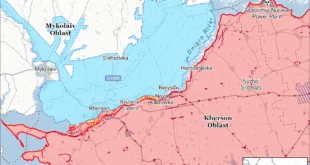According to the Marine Stewardship Council, depletion of fish stocks is the most urgent threat to the world’s oceans.
Ninety-three percent (93%) of the world’s major marine fish stocks are classified as fully exploited, overexploited, or significantly depleted. “Illegal, Unreported, and Unregulated (IUU) fishing is a pervasive, far-reaching security threat.” (Source: Illegal, Unreported, and Unregulated Fishing, United States Coast Guard, 2022)
“Demand for seafood and advances in technology have led to fishing practices that are depleting fish and shellfish populations around the world. Fishers remove more than 77 billion kilograms (170 billion pounds) of wildlife from the sea each year. Scientists fear that continuing to fish at this rate may soon result in a collapse of the world’s fisheries.” (Source: Sustainable Fishing, National Geographic, June 2, 2022) As a follow up question to scientists’ concerns: Who’s counting the illegal catch?
The population of Pacific Bluefin tuna, one of the ocean’s most ecologically as well as economically valuable top predators, has plunged 97% from historic levels.
According to the UN Food and Agriculture Organization, commercial fish stocks are 90% fully exploited. That leaves 10% exposed to the world’s fishing fleet.
As for example, the oceans are pretty much open prey to China’s 17,000 fishing vessels. It is the largest fleet in the world. This compares to 250-to-300 total vessels for both the United States and the EU. Not only is China’s fishing fleet 55 times larger than the combined fleets of the US and EU, but China is ceremoniously ranked as the worst abuser of sea laws as well as inhumane practices, based upon facts from the IUU Fishing Index.
China’s distant-water fleet numbers 3,000 ships. Enormous refrigerated vessels referred to as “motherships” upload the catch of the Chinese fleet, thus allowing an entire fleet of trawlers to continuously fish 24/7 without returning to port. Moreover, this strategy makes it very easy to (1) underreport catch size and (2) hide locations of catch, as Chinese trawlers have a proclivity to drift into restricted territorial boundaries, as ship captains turn off Automatic Identification System (AIS) transponders that are required international tracking devices, thus, making trawlers invisible to satellite tracking.
“Over the last two decades, China has built the world’s largest deep-water fishing fleet, by far, with nearly 3,000 ships. Having severely depleted stocks in its own coastal waters, China now fishes in any ocean in the world, and on a scale that dwarfs some countries’ entire fleets near their own waters. The impact is increasingly being felt from the Indian Ocean to the South Pacific, from the coasts of Africa to those off South America — a manifestation on the high seas of China’s global economic might.” (Source: How China Targets the Global Fish Supply, The New York Times, September 26, 2022)
The IUU Fishing Index computes illegal, unreported, and unregulated fishing. By all accounts, Chinese fishing fleets break every rule in the book, inclusive of (1) overfishing, (2) targeting endangered shark species, (3) illegal intrusion into restricted territorial waters, (4) falsifying licenses and catch documents and (5) employing forced labor.
The first-ever “global footprint” of Chinese distant-water fishing fleet operations published by the Environmental Justice Foundation (UK) claims the Chinese fleet is “frequently associated with illegal fishing.” (Source: The Ever-Widening Net, Environmental Justice Foundation, 2022)
Compared to investigations of distant-water fishing fleets of Taiwan and South Korea, Chinese vessels have the highest rates of alleged IUU abuses. Examples include (1) hunting turtles, cetaceans and seals (2) shark finning (3) human rights abuse, including the withholding of money and personal documents. Curiously, there’s been a major shift from Chinese state ownership to private ownership of distant-water fleets, which effectively inhibits government oversight.
The EJF report claims that 78% of offshore fishery projects that are expressly approved by China’s Ministry of Agriculture and Rural Affairs fall within “exclusive economic zones of 20 African states.” These are crucial zones for the local populations. West Africa is a favorite target for these distant-water fishing fleets utilizing bottom trawlers that drag heavy nets across the seafloor capturing everything in sight including non-target species and undersized fish.
Offshore South America, the Galapagos Islands are a prime target for Chinese trawlers surrounding restricted areas full of abundant ocean wildlife. Satellite imagery 2020-2021 showed the fleets lined up along the edges of international waters surrounding Galapagos, as trawlers catch marine life entering and leaving the protection zone with clear evidence of some trawlers entering the protection zone for quickie catches within restricted areas.
“Out on the lawless high seas off South America’s Pacific coast, a quiet war over the overfishing of endangered squid stocks is being waged— and China is winning.” (Source: China Ramps Up Illegal Fishing in Lawless High Seas off South America, The Telegraph, February 10, 2022)
Global Fishing Watch, which utilizes data from ship transponders to monitor trawlers, followed the pathway of “transshipment” by Hai Feng 718, a Chinese mothership, which has refrigerated storage capable of holding tons of catch as well as fuel and supplies for the fleet at sea. This operation follows the coastline of South American year-round, 24/7 as trawlers catch whatever is available. Motherships are not illegal; however, transshipment makes it easy to underreport catch by individual trawlers and disguise origin of catch.
Drift-Net Fishing
On 20 December 1991 U.N. passed Resolution 46/215 banning operation of large-scale pelagic high seas drift-net fishing and to ensure that a global moratorium on all large-scale pelagic drift-net fishing is fully implemented on the high seas of the world’s oceans and seas, including enclosed seas and semi-enclosed seas, by 31 December 1992.
“Across the Indo-Pacific, oversize fishing trawlers owned by the People’s Republic of China (PRC) are using dragnets large enough to swallow a football stadium. Such illegal, unreported and unregulated (IUU) fishing threatens regional food security, including in the waters of American Samoa, Guam and Hawaii. For Pacific island nations, IUU fishing is also a national security threat.” (Source: Chinese Fishing Fleet Poses Threat to Pacific Island Economies, Indo-Pacific Defense Forum, June 21, 2021)
“The impact of these drift nets is absolutely disastrous,” says Vanya Vulperhorst, campaign director of illegal, unreported and unregulated fishing at Oceana Europe, a conservation non-profit that has investigated illegal drift net fishing across the Mediterranean. “They are indiscriminate in what they trap, and the result is that endangered and protected species are being killed in large numbers.” (Source: California: Trump Vetoes Bipartisan Driftnet Fishing Bill, Wine & Water Watch, Sonoma County Tomorrow, Jan. 4, 2021)
Yep, Donald Trump vetoed the bipartisan driftnet fishing bill.
“The recreational fishing and boating community has long advocated for transitioning away from large-mesh drift gillnets which needlessly kill non-target species including sportfish,” Jeff Angers, president of the Center for Sportfishing Policy… “Today marks a significant victory for marine conservation, and we are grateful for the bipartisan effort to get the Driftnet Modernization and Bycatch Reduction Act across the finish line.” (Source: Trump Vetoes Bipartisan Driftnet Fishing Bill, The Hill, January 1, 2021) Oops, vetoed!
 Eurasia Press & News
Eurasia Press & News




